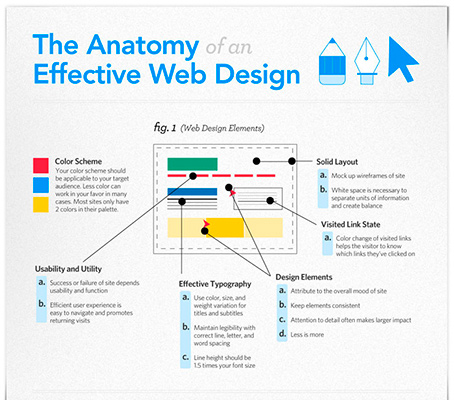Core Principles Of Web Site Design: Guidance For Crafting A User-Friendly Online Visibility
Core Principles Of Web Site Design: Guidance For Crafting A User-Friendly Online Visibility
Blog Article
Web Content Develop By-Scarborough Skinner
When it pertains to web site style, ensuring user-friendliness is vital. From receptive design to streamlined navigation, every element plays a critical duty in developing a site that caters to your target market's requirements. But what about the better details that can make or break a user's searching experience? Remain tuned as we discover some often-overlooked tips that can elevate your internet site's functionality to the next degree, making it genuinely attract attention in the digital landscape.
Importance of Responsive Design
Receptive style is a crucial facet of modern-day site growth. Guaranteeing your site is responsive ways that it can adapt to different screen sizes and gadgets, offering a smooth experience for users.
With the enhancing use mobile phones and tablet computers to access the web, having a responsive layout is vital for getting to a bigger target market. It assists in improving customer experience by making your site simple to navigate and continue reading any type of device.
Furthermore, responsive design can positively influence your internet search engine rankings, as internet search engine like Google focus on mobile-friendly web sites. By having click this link now , you're also future-proofing your internet site, as new devices with varying display dimensions remain to emerge.
Simplify Navigation Structure
To boost customer experience and assist in very easy access to details on your site, enhancing the navigating framework is critical. When developing your site, concentrate on developing a clear and intuitive navigating food selection that aids visitors locate what they're trying to find rapidly.
Restriction the variety of menu items to the essentials, grouping related web pages with each other to stay clear of overwhelming individuals. Use descriptive tags that plainly show the web content of each page, making it less complicated for individuals to understand where each web link will certainly take them.
Consider implementing dropdown menus for subcategories to stop littering the major navigation bar. Additionally, include a search bar plainly on the web page for users that prefer searching for particular information.
Prioritize mobile responsiveness in your navigation design to make sure easy access on all devices.
Maximize Web Page Lots Speed
Improving page lots rate is critical for retaining site visitors on your site. Slow-loading pages annoy customers and can lead to high bounce rates. To optimize page load rate, begin by optimizing photos. Compress pictures without compromising top quality to reduce their data sizes.
Furthermore, make it possible for browser caching to store regularly accessed sources in your area, speeding up lots times for returning visitors. Minify CSS, JavaScript, and HTML documents by getting rid of unneeded personalities, comments, and formatting, boosting load speed.
Consider utilizing a material distribution network (CDN) to distribute your website's content across several web servers worldwide, decreasing latency for customers accessing your website from different areas. Finally, Highly recommended Website using third-party scripts and plugins, as they can substantially affect lots times.
Conclusion
In conclusion, by integrating receptive design, streamlining navigating, and maximizing page load rate, you can produce a straightforward internet site that attract a wider audience and boosts user experience. These essential elements ensure that site visitors can easily accessibility and navigate your site throughout various gadgets, causing increased involvement and complete satisfaction. By concentrating on these crucial facets, you can build a successful website that maintains users coming back for even more.
